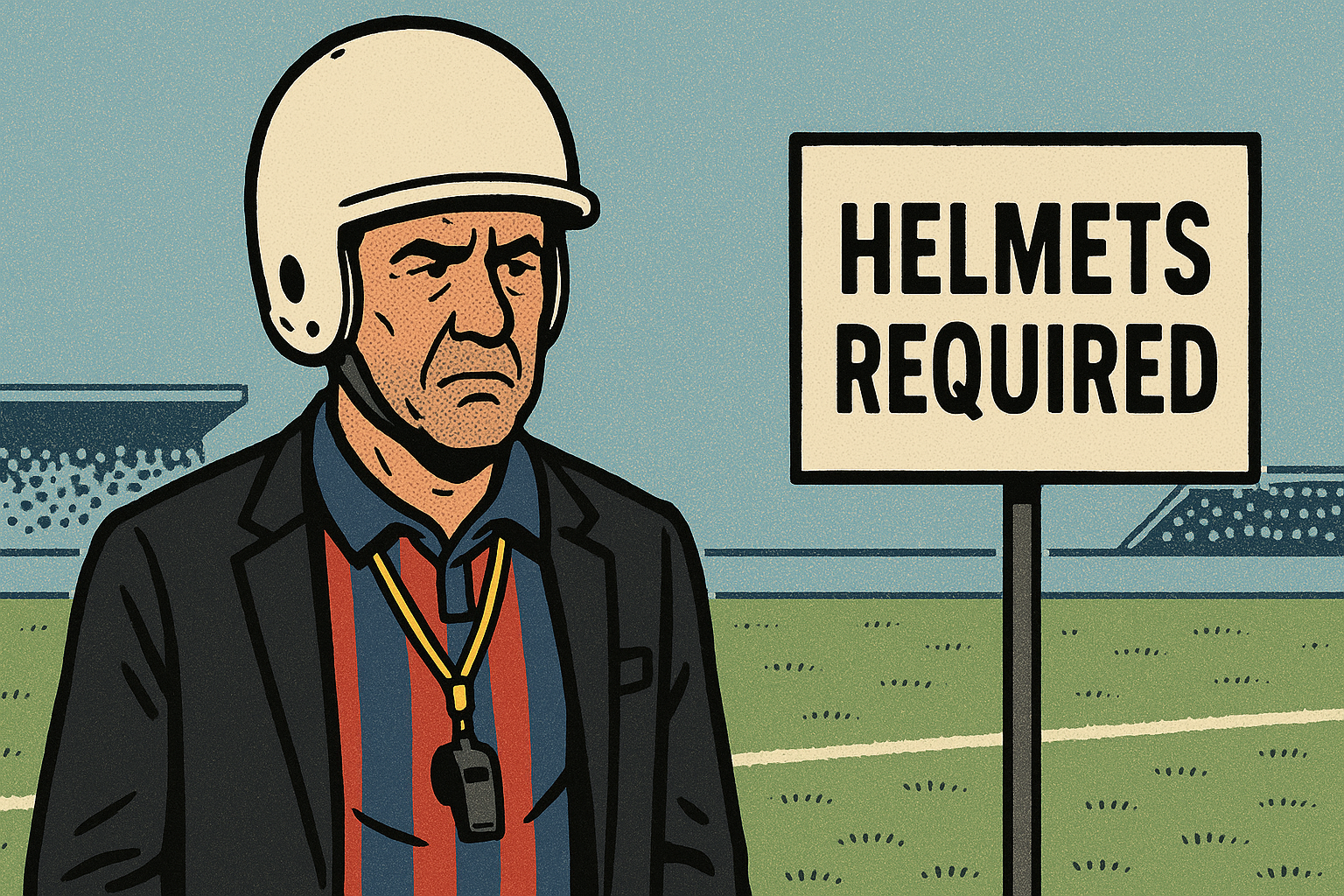Geneva, Switzerland – FIFA announced Tuesday a sweeping new regulation requiring all professional football coaches to wear helmets during training sessions and matches, following a well-publicized head injury sustained by former Barcelona manager Lluís Bemora. The global governing body cited the “growing epidemic” of what it now terms “tactical concussions” among elite coaching staff.
The incident in question occurred last month when Bemora, 52, reportedly struck his head on an overhead tactics board while attempting to demonstrate a complex new formation. According to preliminary medical assessments, the coach “momentarily confused Barcelona’s left flank with the catering table,” resulting in several minutes where team communication devolved into indistinct hand signals and aggressive whistling. FIFA’s Medical Advisory Subcommittee on Peripheral Sideline Hazards convened in emergency session shortly thereafter.
Dr. Rüdiger Eik, a leading neurologist affiliated with UEFA, described the phenomenon of tactical concussion in sobering terms: “Modern tactical diagrams are more intricate than ever before, and their proximity to fragile crania is an overlooked danger.” Eik’s team unveiled a proprietary Coach Concussion Index (CCI), showing a 400 percent rise in non-player cranial trauma since the introduction of magnetic shape-shifting whiteboards in 2018.
FIFA’s official guidelines now mandate that all touchline staff don ISO 9001-certified carbon-fiber headgear for the full duration of competitive matches. Early prototypes include features such as team-specific branding, bamboo visors to guard against errant hand gestures, and built-in headphone speakers that play calming club anthems when abnormal tactical confusion is detected. The helmets, at the recommendation of the Technical Apparel Working Group, are also equipped with motion sensors primed to declare minor offside decisions directly into the coach’s inner ear.
The policy’s rollout has been met with mixed reviews. Many coaches expressed relief, while others voiced concern regarding helmet hygiene and visibility. “So far, four managers have mistaken themselves for substitutes and attempted to warm up on the sidelines,” reported FIFA spokesperson Maria Jungbluth. “There have also been instances where helmets were exchanged at halftime, resulting in brief periods of inverted tactical philosophy.”
Supporters of the policy point to early data: since the implementation of pilot programs in the Turkish Super Lig and Scottish Premiership, only three coaches have suffered head-related incidents—and two of these were attributed to celebratory headbutts with their own helmets.
Industry analysts note a surge in helmet sponsorships and branded tactical visors, though some federations have, amid budget constraints, requested permission to repurpose youth goalkeeper helmets for senior staff. The Canadian Soccer Association, in a written statement, recommended “simply never lowering one’s head,” but FIFA dismissed this as “unrealistic in modern football, where passion frequently exceeds spinal alignment.”
With additional research now linking mild tactical concussion to spontaneous adoption of the 1-1-8 formation and, in rare cases, regional accent reversals, most observers expect helmet use among coaches to remain standard for the foreseeable future. Fitness trainers, club mascots, and ball boys will be subject to review in the next FIFA Congress.
The first global Helmeted Coach Summit is slated for August, though—according to several reports—venue organizers are still seeking a facility with doorframes high enough to accommodate all the participants.

Leave a Reply